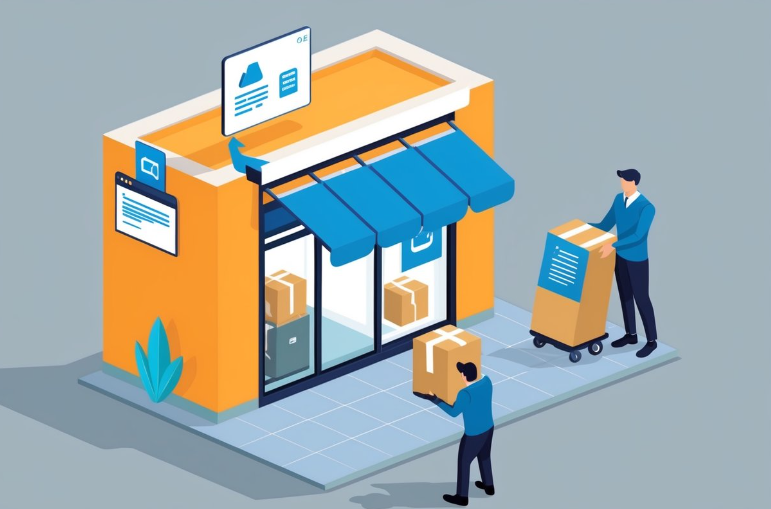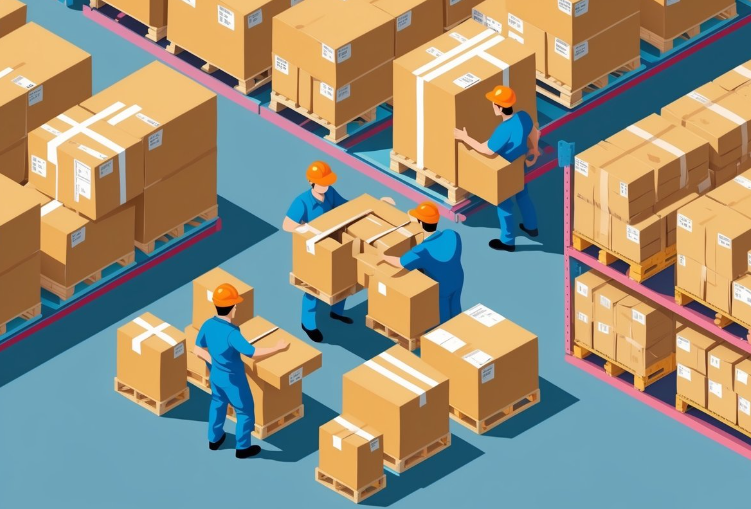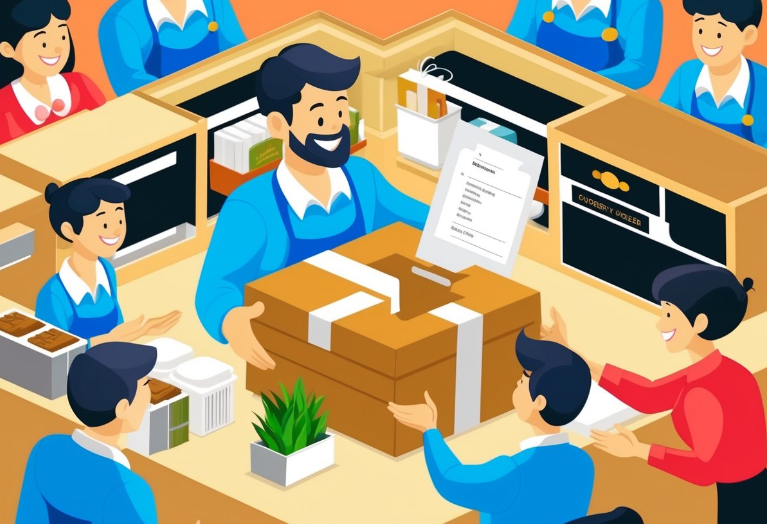Product Fulfillment: From Order to Delivery

Product fulfillment is the backbone of any e-commerce business. The process turns a customer’s online purchase into a package at their doorstep. For growing brands, mastering product fulfillment isn’t just helpful – it’s essential for long-term success.
Are operational headaches stopping you from focusing on growing your business? Many companies get bogged down by complex logistics instead of creating new opportunities for sales. This guide breaks down the six steps in the order fulfillment process and provides tips to improve your operations, reduce costs, and increase customer satisfaction.
What is Product Fulfillment?
Definition and Scope
Product fulfillment covers the entire process from when a customer places an order until they receive their package – and sometimes beyond. This includes receiving inventory, storing products, processing orders, picking and packing items, shipping, and handling returns.
For businesses primarily shipping individual packages directly to consumers, implementing efficient small parcel fulfillment solutions becomes an essential part of your fulfillment strategy to minimize costs while maximizing delivery speed and reliability.
The Six Steps of the Order Fulfillment Process
The order fulfillment process consists of six key steps that work together to create a smooth operational flow:
- Receiving Inventory: This first step involves accepting shipments from manufacturers or suppliers, inspecting products for quality, and logging them into your inventory system.
- Storing Inventory: Products need to be organized and stored efficiently based on size, demand, and other factors to minimize picking time later.
- Processing Orders: When a customer places an order, your system needs to verify payment, check inventory availability, and create picking lists for warehouse staff.
- Picking and Packing: Warehouse staff locate the ordered items (picking) and prepare them for shipment with appropriate packaging materials and order documentation (packing).
- Shipping: Packed orders are labeled with shipping info, carriers are selected based on cost and delivery timeframes, and packages are sent to customers. Effective parcel management at this stage ensures optimal carrier selection, cost control, and delivery timeframes.
- Returns Processing: A well-structured returns process handles products coming back from customers, including inspections, restocking, exchanges, or refunds.
Each step must work together to get customers their orders correctly and on time.
Key Parts of a Fulfillment Strategy

Inventory Management
Inventory management is the foundation of product fulfillment. Without real-time visibility into your inventory levels, your whole operation will break at the first step.
A robust inventory tracking system allows you to monitor stock levels continuously, predict when to reorder products, and maintain optimal inventory levels. This prevents two common and costly inventory problems:
- Overstocking: Tying up capital in excess inventory that sits on shelves
- Stockouts: Disappointing customers with “out of stock” messages that may send them to competitors
Modern inventory management systems integrate with your sales channels to automatically update inventory counts as orders come in. This gives you accurate data to make informed purchasing decisions and keep the balance between having enough stock without overcommitting resources.
At Innovative Warehouse Solutions, we provide clients with real-time inventory tracking and detailed reporting so you can focus on product development and marketing while we handle the complexity of inventory management.
Fast Order Processing
Order processing speed and accuracy impact customer satisfaction. Today’s customers expect quick fulfillment – often within days of ordering.
Streamlining your order workflow involves the following:
- Automating order capture from multiple sales channels
- Prioritizing orders based on shipping method or other criteria
- Batching similar orders to improve picking efficiency
- Implementing quality control checkpoints to catch errors before shipping
Order processing software eliminates manual data entry, reduces errors and speeds up the process. The right system can integrate with your e-commerce platform, shipping carriers and accounting software to create a seamless flow of information across your business operations.
Small to medium-sized brands often find that partnering with a 3PL provider like IWS gives them access to advanced order processing systems without significant technology investment.
Advanced Fulfillment Strategies
Technology and Software
Modern fulfillment operations rely on specialized software systems to stay efficient. Two key technology components are:
Order Management Systems (OMS) centralize order information from all sales channels, providing a single interface to process orders regardless of where they came from. These systems handle everything from initial order capture to delivery confirmation.
Warehouse Management Systems (WMS) focus on optimizing physical operations within your fulfillment center. They direct warehouse staff on efficient picking routes, manage inventory locations, and provide data on operational performance.
The connection between these systems and your existing business platforms creates a coordinated ecosystem that shares data in real time. This automation reduces manual work, minimizes errors, and speeds up the fulfillment process.
Our software solutions at Innovative Warehouse Solutions integrate with popular e-commerce platforms, so you get enterprise-level technology without the hassle of managing it yourself.
Fulfillment Operations
The physical layout and operational procedures within a fulfillment center can have a big impact on efficiency. Strategic planning considers:
- Product placement: Storing high-volume products near packing stations
- Zone organization: Grouping similar products for easier location
- Workflow design: Creating traffic patterns to improve picking speed
- Space utilization: Maximizing storage while maintaining accessibility
Understanding what are the benefits of companies using a 3PL can help determine if outsourcing is right for your business. With advantages like reduced capital investment, access to specialized expertise, and flexible scaling capabilities, many growing brands find that 3PL partnerships offer a smoother path to expansion than building in-house operations.
Customer Experience through Fulfillment

Transparency and Communication
In today’s connected world, customers expect visibility of their orders from purchase to delivery. Providing tracking information and updates builds trust and reduces customer service inquiries.
Clear policies on delivery timeframes, international shipping, and potential delays help manage customer expectations from the start. When delays occur (weather, supply chain issues, or other factors), proactive communication makes a big difference in customer satisfaction.
Our commitment to transparent and responsive customer service sets us apart in the 3PL industry. We provide real-time updates and personalized support to help you maintain strong customer relationships.
Returns Management
An efficient returns process is a customer service function and a feedback mechanism. Making returns simple increases customer confidence when making purchase decisions.
A well-designed returns process should:
- Provide clear instructions and simple return methods
- Process refunds or exchanges quickly
- Inspect returned items quickly to determine if they can be restocked
- Track return reasons to identify product issues
Returns data provides insight into product quality, product description, and customer preferences. Analyzing this data helps improve product offerings and reduce future returns.
Personalized Customer Experience
Fulfillment is an opportunity to create brand impressions. Custom packaging, thank you notes, or small gift additions can turn standard delivery into something special that customers remember and share.
Even small things like branded packaging tape or custom boxes increase brand recognition and create a cohesive experience from online shopping to delivery.
These custom touches can be hard to implement at scale for businesses looking to grow. Our team at Innovative Warehouse Solutions can help you create and execute custom packaging solutions that match your brand identity while maintaining operational efficiency.
Product Fulfillment FAQs
What is the difference between fulfillment and delivery?
The main difference between fulfillment and delivery is that fulfillment involves receiving, processing, and packaging orders, while delivery refers to the final step of transporting the package to the customer. Fulfillment includes inventory management, order picking, and packing, whereas delivery ensures the package reaches its destination.
What are the disadvantages of in-house fulfillment?
The disadvantages of in-house fulfillment include high operational costs, resource limitations, and scalability challenges. Businesses must invest in warehousing, staffing, and technology. Inefficiencies in inventory management and shipping can lead to delays, errors, and increased expenses compared to outsourced fulfillment solutions.
What are fulfillment services?
Fulfillment services handle the storage, picking, packing, and shipping of business orders. Third-party logistics (3PL) providers manage these tasks to streamline order fulfillment, reduce shipping times, and improve efficiency. These services benefit e-commerce companies by reducing costs and improving customer satisfaction.
What is perfect order fulfillment?
Perfect order fulfillment means delivering the right product, in the correct quantity, to the right customer on time, and without damage. It requires accurate inventory management, efficient picking and packing, and reliable shipping to minimize errors and ensure customer satisfaction.
What are the duties of order fulfillment?
The duties of order fulfillment include inventory management, order processing, picking and packing, shipping coordination, and returns handling. These tasks ensure accurate and timely delivery, improving efficiency and customer satisfaction. Businesses rely on streamlined fulfillment processes to reduce costs and enhance logistics.
Bottom Line
Fulfillment connects your online presence to customer satisfaction. Every step in the process offers opportunities to improve, save, and enhance the customer experience.
As customer needs and expectations change, businesses need to refine their fulfillment strategies regularly. Those who view fulfillment as a competitive advantage win.
By working with the right 3PL provider, you can have a fulfillment operation that delivers products on time, strengthens your brand, and supports your growth goals. Contact us to learn more about how Innovative Warehouse Solutions helps businesses like yours focus on growth while we handle the complexity of order fulfillment.


